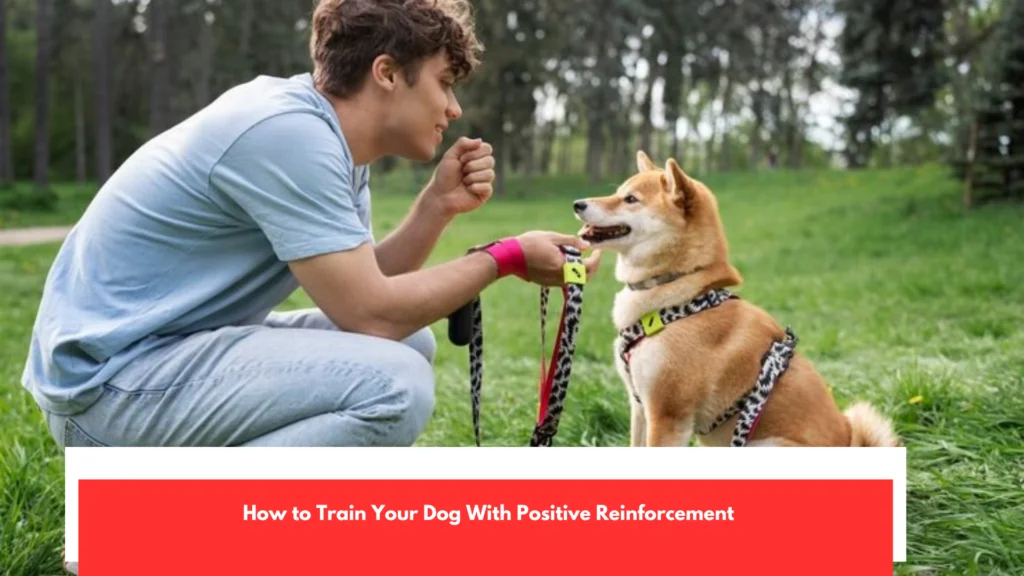How to Train Your Dog With Positive Reinforcement. The term positive reinforcement has used and you may have heard what it means. The term in fact has two uses: It is a process by which dogs (indeed any pet) can taught new techniques, and it also a term applied to describe a group of trainers who employ positive reinforcement as their primary training technique. Positive reinforcement reinforces behavior, develops trusting relationships between pet parents and their animal companions, and safeguards the behavioral well of pets compared with other techniques.
Reinforcement is of two types, positive and negative. The positive in positive reinforcement is not good. It means “added.” Reinforcement is to strengthen. With this type of training a pup, you include something right after you have the behavior that you want to strengthen in the dog during the training. What we introduce is something that the dog likes/wants, such as a treat or a belly rub. Unless the behavior occurs repeatedly over an extended period of time, positive reinforcement has not realized. One such thing would be training your dog to go to the bathroom outside rather.
What is positive reinforcement dog training?

Than on your new hardwood floors. When your dog starts to pee wait until it is over. When they do, bring in some of the sweet stuff and complimentary words. This will bring a desire in them to go out and do their business and collect their prize. This is now to occur more because it is being positively reinforced. When you are training your dog and you are not getting the desired action to occur more frequently at the time you are asking, then you are not effectively employing positive reinforcement. The statement that positive reinforcement does not work is not a true one.
It is truer to say that there has not been positive reinforcement, which implies that there is something wrong about the implementation. The dog also determines the reinforcing effect of something and what it is not. An example of this is that a dog that just had a full meal may not find food as reinforcing as having the option to go out or play to dispose of the energy after the meal. Conversely, a dog which has been exercising and has not eaten in a few hours can find food very reinforcing. Even a complex element of learning, the idea of negative reinforcement results in a similar confusion.
Some ground rules

Bad is not negative; It means subtracted. The fact that both positive and negative reinforcement strengthen behavior makes them similar. Positive reinforcement involves the addition of something after an occurrence of the behavior and negative reinforcement involves the removal of something after occurrence of the behavior. In the case of a negative reinforcement, the item or thing that is removed or taken is often something that does not please the dog and which it would rather avoid. As an example, when there is an event occurring that the dog believes to be frightening, such as someone running.
At them or attempting to pet them, they could bark at them. When the frightening object ceases or disappears, then snapping could have been negatively reinforced. Negative reinforcement is a tricky procedure. It is not to be confused with punishment, and when applied in the traditional manner, it is not in itself a humane method of educating your pet. The reason is that they have to be exposed to something that they do not want to be exposed to something that they see as painful, scary, intimidating, or even threatening. The second a human being puts something bad into the habitat.
Types of rewards

Of a pet, there is fallout. Three significant consequences of negative reinforcement are: Positive reinforcement is a movement founded on the principle that, as professionals and pet parents, we should be engaged in supporting the behavior we want to see, rather than responding and punishing behavior we do not want to see. Due to the method of punishment application, it also carries several possible fallouts, such as statistical growth of fear-related conduct and likelihood of violence. Training can be employed as a form of communication with your dog that is enjoyable and a reward in itself.
Training your dog by using positive reinforcement you provide a physical or verbal cue to a behavior, wait until the dog has performed the behavior and then provide an item that the dog desires. Do this a number of times to evaluate how the behavior has changed. Does the dog sit more reliably, more often or more quickly You cannot say, I used positive reinforcement by giving my dog a treat because he sat down. You might have done this but, unless you sit on cue more frequently, you do not positively reinforce the behavior. Markers are also used as an aid.
Effective Use of Clickers and Reinforcers in Dog Training

One of the more popular markers used in training are clickers. They assist in communicating to the dog what they did to receive the reinforcer. It is applied at the moment when the task is done by the dog and immediately before the reinforcement. Considering the above, say you want your dog to sit, then wait until your dog is in contact with the floor and then immediately mark the point with the marker. Then deliver the treat. A professional trainer can get you clicking soon
Scope out your training so you can be sure you are really using it Track your training so you know. That what you are working on is getting better. i.e. Does your dog sit when you command it to sit Training conditions Minimize distraction during the process of learning a new behavior with your dog. Choose your reinforcers during a structured session, you want to use something that will be pleasing to your dog. It is important to remember that they determine what is reinforcing, and what is not.
